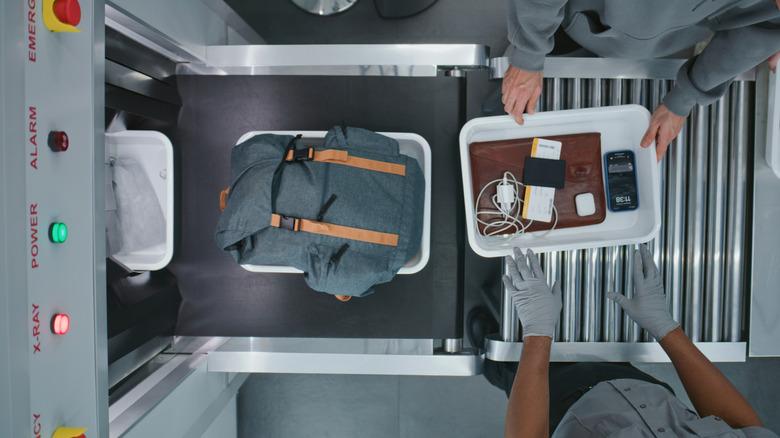Table of Contents
- Understanding Air Travel Security Regulations and Pepper Spray Restrictions
- Exploring Legal and Effective Personal Safety Tools for Air Travelers
- Comparative Analysis of Pepper Spray Alternatives for In-Flight Protection
- Expert Recommendations for Choosing and Using Non-Liquid Self-Defense Devices
- Closing Remarks
Understanding Air Travel Security Regulations and Pepper Spray Restrictions
Traveling by air introduces a unique set of security protocols designed to keep passengers safe. Among these protocols, strict regulations govern the transport of self-defense items such as pepper spray. Due to its aerosol nature and potential safety risks, most airlines and airport security agencies prohibit carrying pepper spray in both carry-on and checked luggage. This is primarily because pepper spray canisters often contain flammable propellants and chemicals that could pose hazards during flight. Familiarizing yourself with these rules not only streamlines the airport screening process but also helps avoid fines, confiscations, or travel delays.
Before you fly, consider these important restrictions:
- Airlines generally forbid pepper spray exceeding a small volume limit-often under 2 ounces or 59 milliliters.
- Even small canisters may be subject to state or country-specific regulations that are more restrictive than aviation rules.
- Most airports explicitly ban any self-defense sprays in cabin baggage for the safety of all passengers and crew.
Exploring Legal and Effective Personal Safety Tools for Air Travelers
When it comes to maintaining personal security in the confined and often crowded environment of an airplane, travelers need to rely on tools that comply with strict airline and TSA regulations. Unlike pepper spray, which is banned on all flights due to safety concerns, several innovative and legal alternatives can offer peace of mind without compromising safety. Items such as personal alarms, which emit a loud noise to deter potential threats, and compact tactical flashlights capable of temporarily disorienting an aggressor, serve as smart, discreet options. Additionally, pressure point self-defense keys, designed for striking vulnerable areas without the need for extensive strength or skill, ensure quick and effective protection within close quarters.
Other legal tools to consider include:
- Personal Safety Whistles: Easy to carry and highly effective for drawing attention.
- Miniature Kubotans: Small, non-threatening self-defense rods that can enhance grip and impact in tight spaces.
- Self-Defense Keychains: Designed to blend with everyday accessories while providing practical security.
By selecting these TSA-compliant gadgets, air travelers can elevate their security without risking confiscation or violating airline policies. Always check the latest airport regulations before packing, as guidelines can evolve, ensuring you stay prepared and protected on every journey.
Comparative Analysis of Pepper Spray Alternatives for In-Flight Protection
When considering alternatives to traditional pepper spray for in-flight protection, it’s essential to evaluate options based on effectiveness, legality, and ease of use. Many travelers find that compact personal alarms offer a reliable safety measure without the risks associated with aerosol sprays. These devices emit loud sounds, capable of startling potential threats and attracting attention from nearby passengers or crew members, all while being perfectly compliant with airline security regulations. Additionally, tactical pens provide a discreet and practical option. Made from durable materials, they’re not only useful writing instruments but also effective self-defense tools that won’t raise eyebrows during security checks.
Other alternatives include keychain-sized stun devices and laser pointers, each with unique features tailored for confined spaces like cabins. Stun devices offer non-lethal incapacitation, but their legal status can vary widely depending on the airline and destination, so it’s crucial to verify in advance. Meanwhile, laser pointers can temporarily disorient or distract aggressive individuals without causing permanent harm. When selecting a method of protection, prioritize those that blend portability with discretion to ensure peace of mind without compromising compliance or cabin safety protocols.
Expert Recommendations for Choosing and Using Non-Liquid Self-Defense Devices
When selecting non-liquid self-defense devices, prioritize ease of access and user-friendliness to ensure quick deployment in high-stress situations. Compact tools such as tactical keychains, stun guns, and personal alarms should fit comfortably in your hand or pocket and feature intuitive activation mechanisms that don’t require intricate maneuvers. Additionally, check for airline compliance and legality to avoid complications during security screening. Devices constructed from durable materials, like aircraft-grade aluminum or reinforced plastic, offer the dual benefits of longevity and effectiveness without adding excessive weight to your carry-on.
Maximizing the utility of your chosen device involves regular practice and situational awareness. Carry your self-defense tool in a consistent location – this muscle memory can save precious seconds if you need to act swiftly. Additionally, accompany your device with a clear understanding of its capabilities and limitations; for instance, personal alarms can deter threats by drawing attention, while stun guns require accurate targeting. Keep your device charged or maintenance-ready, and consider pairing it with complementary safety habits such as travel route planning and staying alert in unfamiliar environments.
- Check local and airline laws to ensure device legality
- Practice deployment regularly to build confidence
- Choose discreet yet accessible carry options
- Combine with safety habits for enhanced protection
Closing Remarks
In today’s ever-evolving landscape of air travel security, finding effective and compliant self-defense tools is more important than ever. While pepper spray remains a popular choice, its restrictions on flights make it essential to explore viable alternatives that can provide peace of mind without compromising safety or regulations. From personal alarms to tactical pens, the options highlighted here offer practical solutions tailored to the unique challenges of air travel. Ultimately, the best choice depends on your personal comfort, the specific airline policies, and local laws. Prioritizing non-lethal, travel-friendly options ensures that you stay prepared and confident throughout your journey. Safe travels and stay secure!Check Our Other Blogs
- StunGun – Your Trusted Source for Stun Guns, Laws, and Self-Defense Tips
- PepperSprayLaws – Your Trusted Resource for Pepper Spray Information
- StunGunLaws – Your Trusted Guide to Stun Gun Legality and Safety




